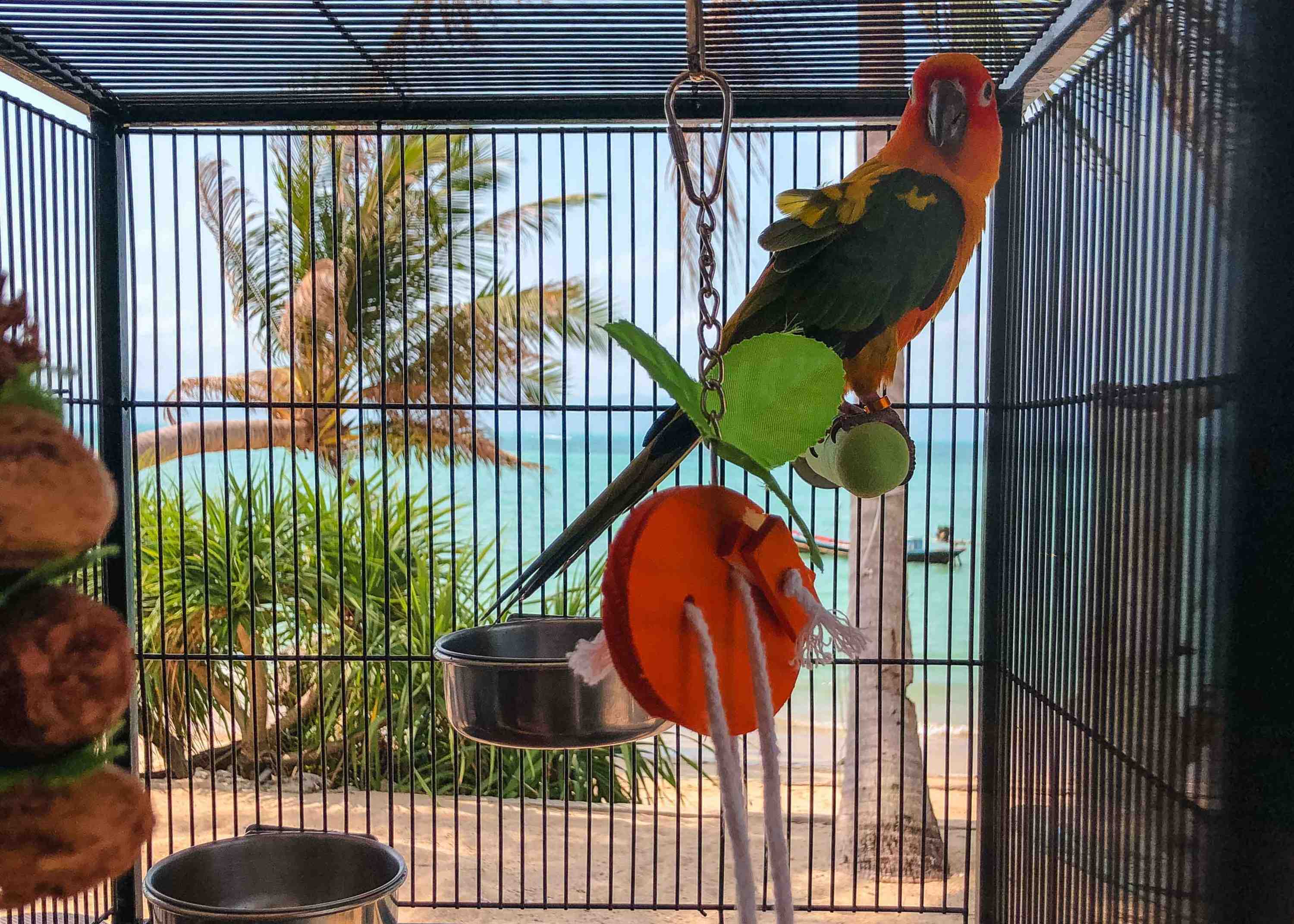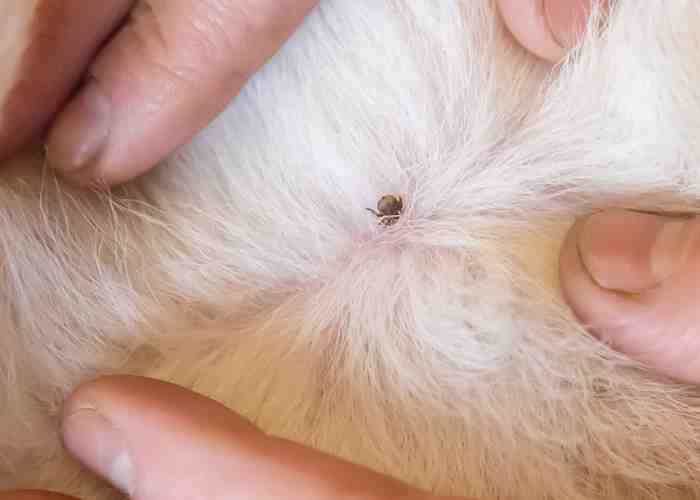How To Care For Your Birds Feet
When we think of birds, we often think of these fascinating creatures flying but what goes up must come down. A bird's wings are important but so are its feet.
The foot of a bird is really amazing and they stand for short periods but long periods too. While standing all night would completely tire out a person or dog, parrot feet and legs are perfectly designed for long-term perching.
From a functional perspective, there are three main functional foot types: grasping; walking and wading; and swimming.
Parrots have a zygodactyl foot arrangement meaning they have 2 toes in the front and 2 toes in the back. This allows them to get a good grasp, hold things, and perch.
Most birds tend to be left-footed just as humans tend to be right-handed. This doesn’t mean that every bird is left-footed because some are right-footed. But Mango is left-footed, after observing him he uses his left foot to grasp and hold things like treats, toys, and so on.
WHY MANY TYPES OF PERCHES ARE IMPORTANT

Perches come in different sizes like small medium and large. I like to choose small or medium for conures. The size you choose will depend on your bird because that will determine the size of their feet!
Birds need a variety of perches of differing diameters and textures for optimal foot health. Because of the locking mechanism found in the bird’s foot, they can develop pressure points on the bottoms of the feet from constantly standing on perches of the same diameter. Variety is going to protect and exercise your bird's feet.
Inappropriate perches can harm foot health and lead to bumblefoot, this is used as an all-encompassing term for issues involving infection or inflammation of the foot. Over time, this can develop into pressure sores, called pododermatitis. Sores can then become infected, resulting in deep lesions and can be difficult to cure.
Overweight birds are more prone to pressure sores. If your avian vet has advised you to work on weight loss for your bird, then it’s very important you do so! Purchase a good-quality gram scale, and weigh your bird periodically. If your bird is on a seed diet converting them to a healthy chop diet like the natural feeding system is going to benefit them greatly! You can also check out our blog on why it’s important to weigh your bird.
To maintain proper foot health, a bird must be provided with perches that are appropriate for the bird’s feet. The majority of the bird’s weight should be balanced on the ball of the foot, and the toes should curl around the perch at a gentle angle. If perches are too narrow in diameter, it will be difficult for a bird to properly hold on to a perch and won’t have a good balance. A bird should be able to balance on a perch and its nails should reach about half around the perch and never all the way around.
DIFFERENT TYPES OF PERCHES
Cleaned, natural branches are ideal perches for pet birds. Branches should not be sprayed with chemicals or insecticides if you are going to use them in your bird’s cage. It’s important to clean them with antibacterial soap and to rinse with hot water. You can purchase natural wood perches online that are safe. Most birds will also enjoy chewing on fresh branches, especially if the outer bark has not dried. It’s good exercise for their beaks and provides enrichment. Make sure to remove any splintered pieces of wood or sharp pieces that could cause injury.
When positioning perches, be sure that droppings do not fall into food and water dishes. Make sure perches in your bird’s cage are placed in a comfortable location for your bird to perch high but allow the bird to get to the food and water dishes.
Varying diameters in the perches will help your birds avert such problems as arthritis and atrophy and strengthen and increase dexterity in the feet. Perches are available in a variety of materials. There are pros and cons to most of them.

Natural wood branches are the best way to go. Birds in the wild live in trees that have varying texture, hardness and width in their branches. I do not recommend wooden dowel perches because of their uniformity in size and shape. They do nothing to exercise the feet and can be slippery.

Sandy and cement perches come in a fun variety of shapes, sizes, and colors. These will help keep nails trimmed and help stimulate blood flow in the feet. However, they aren’t meant for long-term perching as the coarse texture will irritate their skin after too long. These types of perches are better suited for food bowl areas. We have noticed that Mango’s nails are more trim with these perches BUT a con is they can cause trauma to the footpad and lead to bumblefoot which is why it shouldn’t be a perch they use for long periods. After installing a new pedicure perch in your bird’s cage, check the bottom of its feet periodically to ensure that it isn’t too abrasive.

Natural rope perches are great for comfortable relief from the harder perches. Some older, arthritic birds or those with handicaps might really appreciate them. Safe ropes with 100% natural fibres like a hemp rope, abaca rope, and sisal are great options. However, regular rope is unsafe since they are so soft, they invite chewing, and can get very frayed. These frayed parts can easily trap toes and nails.
Shelf perches are also good choices. It gives a birds feet the chance to stretch and it’s a great platform for toy play and eating. They are also easy to clean.
I always buy safe and non toxic perches but before putting them in the cage I always like to clean them and give them a good rinse. I make sure they dry well since wood is porous and can harbor bacteria especially when wet. Perches of any material will need to be removed and scrubbed down any time there is food or fecal matter stuck to them, which will be often. Try to select perches that will make this job easiest for you.
BIRD NAILS
It is also important that birds have their nails trimmed back and shaped periodically. Overgrown claws can easily become caught in toys or on other things and can make perching difficult. Nail trimmings when needed can be done by an avian vet or if you are experienced it can be done at home. If you have any doubts or questions about trimming nails, have it done by a professional.
Best Things For Your Bird’s Feet
- Offering a variety of perches in differing textures and diameters
- Routine grooming to keep nails of proper length
- Offering a proper diet containing plenty of nutrients necessary for healthy feet, skin, and nails
- Maintaining your bird at a good bodyweight so the feet are not overly stressed
- Providing your bird with plenty of exercises and appropriate toys and swings to maintain foot health
Worst Things For Your Bird’s Feet
- Offering perches of all the same diameter and texture or using perches that are too small in diameter ie dowel perches are undesirable and usually, come with every cage
- Offering an all-seed diet or a diet not balanced in nutrients, including calcium, protein, and beta-carotene
- Frostbite, from birds standing on metal perches, or if housed outdoors, with no protection from freezing temperatures
- Clipping or grinding the nails back so that they bleed, or keeping the nails so short that the bird cannot grip properly
- Not washing your hands prior to handling your bird, especially if you are a smoker (nicotine and other toxins can be transferred from your hands to your bird’s feet)




.png)